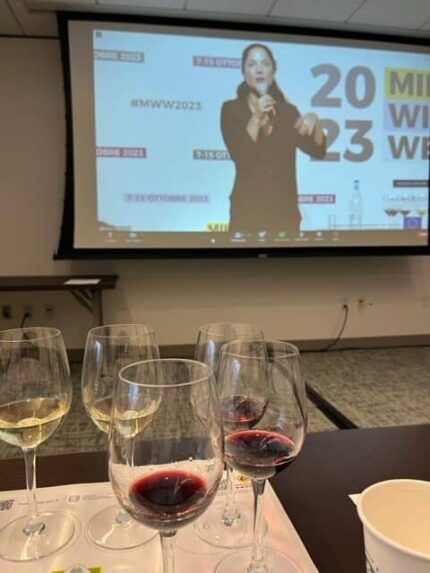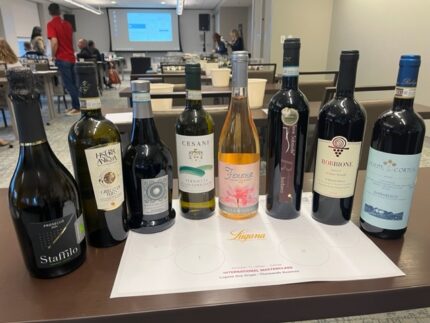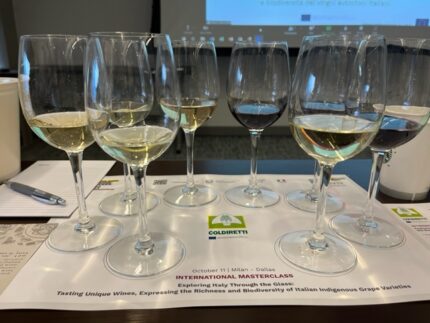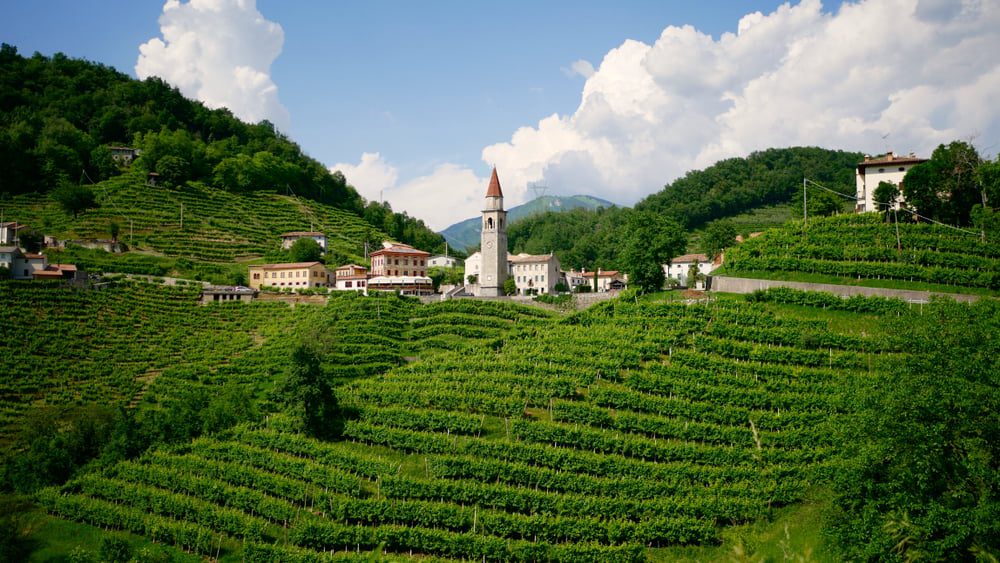Understanding Italian wines can be both a wonderful adventure and a perplexing journey for wine lovers. With a vast array of regions, grape varieties, and winemaking traditions, Italy offers a detailed range of flavors and styles that can be as rich and diverse as its history. Throw in the labeling and classifications and it becomes quite the matrix to navigate. The world of Italian wine is a puzzle, where each bottle conceals a story woven from the very essence of the land, culture, and the skilled winemakers who craft it.

Fortunately, during Milano Wine Week, with the support of the Houston Office of the Italian Trade Agency and sponsored by Coldiretti, I had the chance to attend a Master Class covering this subject. This session highlighted the variety of Italian wines by region, allowing me to sample a diverse range of wines and gain insight into their unique characteristics. Master Sommelier Sara Tosti led us through a session titled “Exploring Italy Through the Glass: Tasting Unique Wines, Expressing the Richness and Biodiversity of Italian Indigenous Grape Varieties” that was live in Milan and simulcast in Dallas.

The wines covered eight regions and gave me the chance to taste several new varietals showcasing native grape varieties across Italy. Since Italy has 350 authorized grape varietals, this is often the most challenging region for those reaching for wine credentials.

We tasted eight wines including.
- 2022 Staffilo, DOC Prosecco Extra Dry Biologico from Veneto, a designated region in northeastern Italy which is known for Prosecco DOC (Denominazione di Origine Controllata). The Staffilo’s have been making wine for three generations. I tasted pear, peach, apple, and citrus.
- 2022 Hystoria Antiqua, DOCG Greco di Tufo – this is an Italian white wine produced in Campania in southern Italy along the Amalfi Coast. The area is known for the volcanic soils in the region to produce wines with great acidity and minerality. The wine produced in this region is classified under the Denominazione di Origine Controllata e Garantita (DOCG) Greco di Tufo appellation, the highest level of quality given for adhering to the region’s regulations. The winery was founded in 1969 by Michael Cornacchio and Margherita De Iorio and it is known for its work with indigenous grapes. I tasted flowers, citrus, green apple, almonds, and herbs.
- 2019 Perla del Garda, DOC Lugana Superiore – the Lugana region is in northern Italy, primarily in the Lombardy region near Lake Garda, and was one of the first regions to earn DOC status. Lugana is known for white wines from the Turbiana grape variety. Within the Lugana DOC, there is a subcategory known as “Lugana Superiore,” which must meet specific requirements for the designation including aging in bottles for at least one year. The winery’s name translates into “Pearl of the Lake” and the winery is literally located in the middle of the vineyards. There was so much happening in this glass and the aromatics were intense. Lots of dried peach, white flowers, lemon, rosemary, and a great minerality and structure.
- 2022 Az Agr Cesani Vincenzo Vernaccia – Tuscany is often known for its red wines, but this is a delicate white made from organically grown Vernaccia grapes in San Gimignano, a medieval town located in central Italy. The was the first Italian white wine to receive the DOC designation in 1966 and the DOCG designation in 1993. The winery calls this “the wine of the people” and the region is known for its Mediterranean climate, sea breezes, hills, and well-drained soils. You could taste the sea influence with the minerality along with notes of lemon meringue, white flowers, almonds, and green apple.
- 2022 Villa Sorbo, DOC Galluccio Rosato — located in Galluccio, a sub-region of Campania in southern Italy known for its winemaking heritage. The region is known for its range of indigenous and traditional grape varietals. While Villa Sorbo made wine for many years for the family’s own consumption, the winery was not started until 2013. This wine, made from Aglianico grapes benefits from the volcanic-rich soil to make a bold and structured wine.
- 2020 Produttori di Govone, DOC Barbera d’Alba Superiore – this is an appellation within the larger Barbera d’Alba DOC in Piedmont in northern Italy. The region is known for producing Italy’s most widely planted red wines grown on steep ts. Like the other designations, “Superiore” indicates aging, time in wood barrels, and stringent regulations to be granted. Produttori di Govone was founded in 1957 and currently has 250 contributing members. I tasted lots of black fruit, red fruit, spice, vanilla, fig, and herbs.
- 2016 Terre di Serrapetrona, DOC Serrapetrona Robbione — located in the Marche region of central Italy known for the natively grown Vernaccia Nera grape. Founded in 2004, the winery realized it found the terroir to make the grape flourish. I tasted intense red and black fruit, balsamic, chocolate and mocha. It was a big wine, but had a little softness at the end.
- 2020 Cortese Giuseppe, DOCG Barbaresco – located in the Piedmont region of northern Italy in the Langhe hills, known for different terroirs and microclimates. The region is well known for producing red wines made from Nebbiolo that meet aging requirements. Cortese Giuseppe was one of the first pioneers to see the potential of the region in 1971 and remains proud of its commitment to showing the world how good Nebbiolo can be. I tasted red fruit, mushrooms, roses, tar, and spice.
Each region told a distinct story, capturing the essence of the land, culture, and winemakers behind it. Several years ago, I instinctively made a choice to always drink wine from the region where I am where I am when traveling in Italy. I’ve never regretted it.



